Turf Wars: Outsmarting Crabgrass for a Gorgeous Lawn
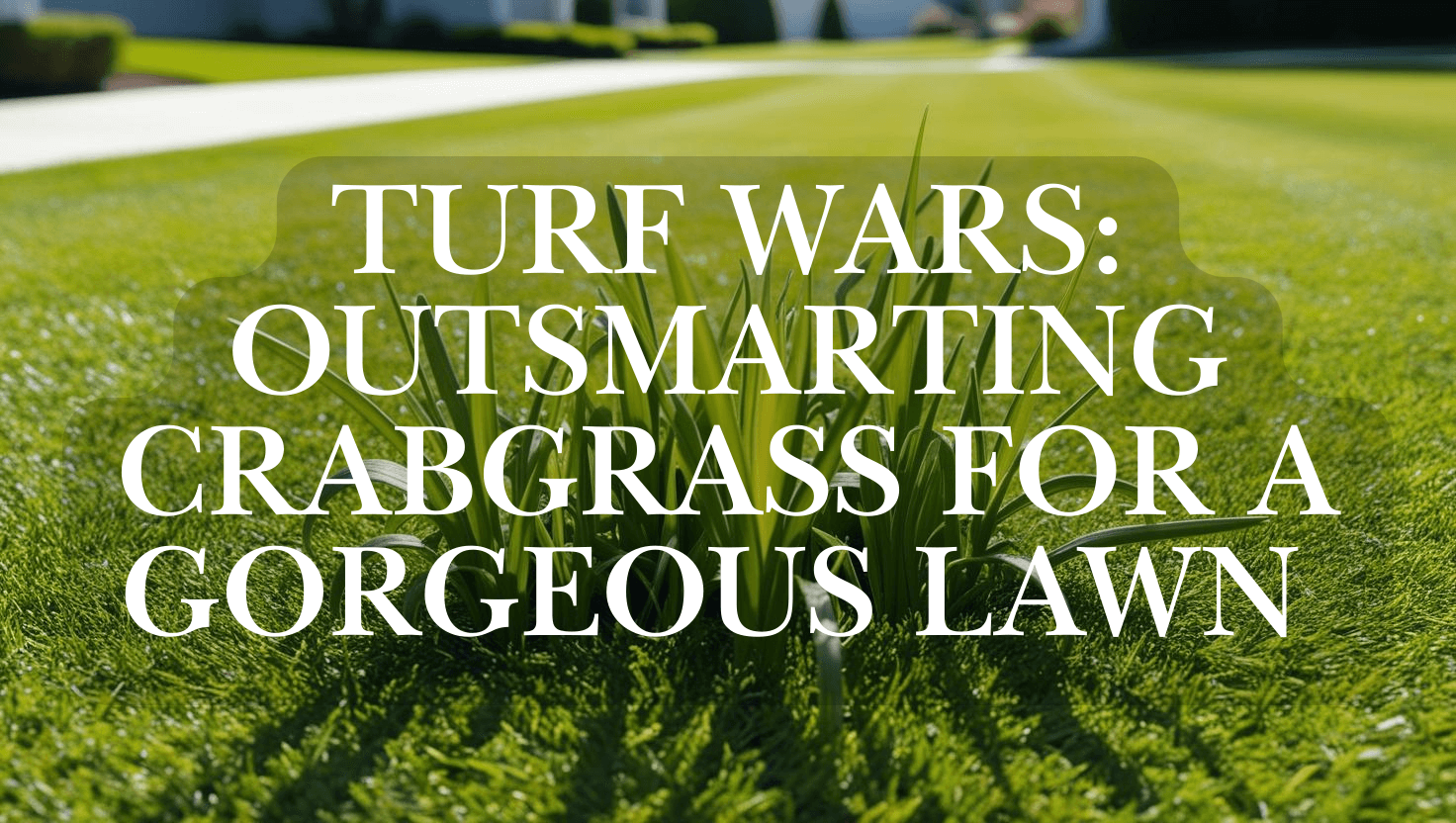
Crabgrass (genus Digitaria) is a warm-season annual grass, which means it grows, flowers, and dies within a single growing season. The most common species, Digitaria sanguinalis (large crabgrass) and Digitaria ischaemum (smooth crabgrass), grow during the warmer months and are prolific seed producers, which contributes to their spread.
Crabgrass seeds usually germinate in the spring when soil temperatures consistently reach 55°F (12°C) to 60°F (15°C). Unlike other grass species that thrive in cooler temperatures, crabgrass thrives in hot, dry conditions and compacted soils. By mid-summer, crabgrass can dominate weak or thinning patches in lawns, producing seeds that can survive the winter to grow again the next year.
Preventing Crabgrass
- Optimize Lawn Health: A thick, healthy lawn is your first line of defense against crabgrass. Crabgrass takes advantage of thin, bare, or patchy areas, so maintaining a dense lawn can crowd out this invasive weed. Practices like regular mowing, aeration, and fertilization contribute to a
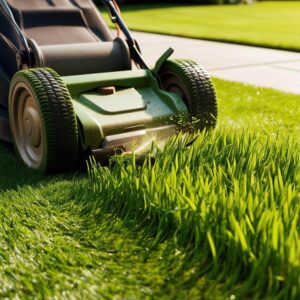 healthy lawn that’s less susceptible to weed invasion.
healthy lawn that’s less susceptible to weed invasion. - Mow at the Correct Height: Crabgrass thrives in short grass, so mowing your lawn at the correct height for your grass species is essential. Keeping your lawn slightly taller (about 3-4 inches) shades the soil, reducing the amount of sunlight that reaches the crabgrass seeds. This can hinder their germination and growth.
- Water Properly: Crabgrass is highly drought-resistant, unlike many desirable grass species. Frequent, shallow watering creates ideal conditions for crabgrass, so it’s better to water your lawn deeply and infrequently. Aim for 1 to 1.5 inches of water per week, applied all at once or in two deep waterings to promote deeper root growth in desirable grasses and reduce crabgrass competition.
- Aerate Soil: Compacted soil favors crabgrass by limiting root growth of desired grasses. Aerating your lawn, especially in the spring or fall, reduces compaction and allows water, air, and nutrients to penetrate the soil, encouraging healthy grass growth.
- Use Fertilizer Wisely: Fertilizing at the right times (fall and early spring) boosts your lawn’s growth, which will help it compete more effectively against crabgrass. Avoid high nitrogen fertilizers during summer, as they can encourage weed growth in warm conditions.
Pre-Emergent Herbicides: The Key to Crabgrass Prevention
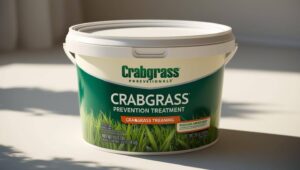
- Pre-emergent herbicides are a common and effective strategy for preventing crabgrass. These products create a chemical barrier in the soil that stops crabgrass seeds from germinating.
- Choose the Right Pre-Emergent: Pre-emergent herbicides come in different formulations, so read labels carefully. Products containing ingredients like prodiamine, dithiopyr, and pendimethalin are effective against crabgrass. Some pre-emergents also prevent other weeds, offering broader protection.
- Apply at the Right Time: Timing is crucial with pre-emergent herbicides. The best time to apply pre-emergents is in early spring when soil temperatures are around 55°F, typically a few weeks before the last frost date. In most regions, this falls between late March and early April.
- Follow Application Instructions: Apply the herbicide evenly across your lawn, and be sure to water it in as directed. This helps to activate the herbicide and incorporate it into the top layer of soil, where it will stop crabgrass seeds from germinating.
- Reapply Mid-Season if Necessary: In areas with longer growing seasons, crabgrass seeds may continue to germinate into summer. A second application, often in late spring or early summer, can extend the pre-emergent barrier and provide added protection.
Post-Emergent Treatments for Crabgrass
Despite best efforts, crabgrass sometimes sneaks into lawns. Once crabgrass has germinated, pre-emergent herbicides are no longer effective, so post-emergent options become necessary. Post-emergent herbicides target young crabgrass plants and prevent them from producing seeds.
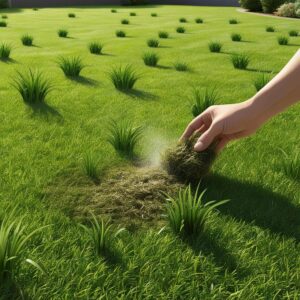
- Selective Post-Emergent Herbicides: These herbicides kill crabgrass without harming other grasses, making them ideal for treating lawns with a crabgrass infestation. Look for active ingredients like quinclorac or fenoxaprop, which are effective against young crabgrass.
- Apply to Young Crabgrass: Post-emergent herbicides work best when applied to young, actively growing crabgrass. Applying when the plants are small (three to five leaves) improves effectiveness and minimizes damage to surrounding grass.
- Avoid Over-Application: Overusing post-emergents can damage your lawn. Always follow the manufacturer’s recommended dosage and apply only to areas with visible crabgrass.
- Manual Removal: In small infestations or in garden beds, hand-pulling is an option. Crabgrass has a fibrous root system that makes it relatively easy to pull out, especially if the soil is moist. This approach is labor-intensive but avoids the need for chemicals.
Organic and Natural Approaches to Crabgrass Control
If you prefer to avoid synthetic herbicides, several organic and natural methods can help control crabgrass.
- Corn Gluten Meal as a Natural Pre-Emergent: Corn gluten meal, a byproduct of corn processing, is an effective natural pre-emergent herbicide that can inhibit crabgrass seed germination. Apply it in early spring as you would a chemical pre-emergent. However, corn gluten meal may require repeated applications over several years to achieve the desired effect.
- Use Vinegar for Spot Treatment: A natural, homemade herbicide can be created using vinegar with at least 20% acetic acid concentration. Apply vinegar directly to crabgrass, being careful to avoid nearby plants as vinegar can damage any vegetation it contacts. This method works best in sunny, dry conditions and on younger plants.
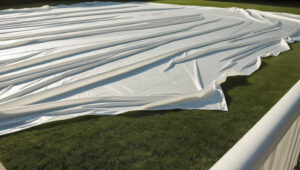
- Solarization: For areas with severe infestations, solarization can effectively kill crabgrass and other weeds by trapping heat and sterilizing the soil. To solarize, cover the affected area with a clear plastic sheet, anchor the edges, and leave it in place for 4-6 weeks during the hottest part of the year. This technique is best suited for garden beds or areas that you plan to replant.
A seasonal lawn care schedule can help you maintain a healthy lawn that resists crabgrass invasion. Here’s a recommended approach:
- Early Spring: Apply pre-emergent herbicide and start watering deeply. Inspect the lawn for bare spots and fill them with seed to prevent crabgrass.
- Spring: Begin regular mowing at the proper height for your grass species. Aerate and fertilize your lawn to encourage growth.
- Summer: Water deeply and less frequently, especially during dry spells. If crabgrass appears, treat it with a post-emergent herbicide or pull it by hand.
- Fall: Apply fertilizer to strengthen the grass before winter dormancy. Overseed any thin areas to encourage dense growth.
- Winter: Rake leaves, and keep the lawn free of debris to avoid compaction and bare spots where crabgrass could sprout in spring.
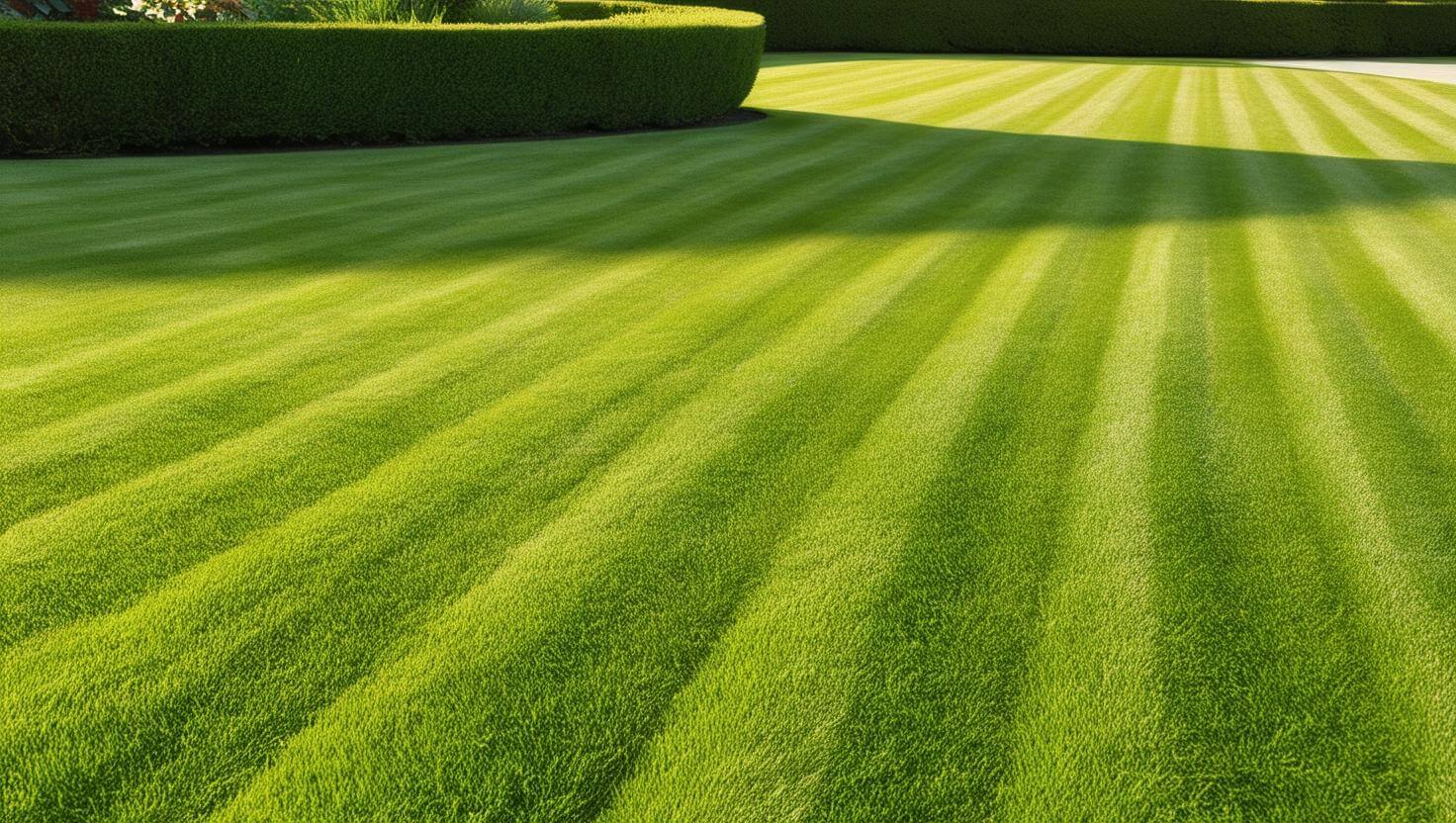
Common Mistakes in Crabgrass Management
- Applying Herbicides Too Late: Timing is critical with herbicides, and applying them too late will render them ineffective.
- Over-Fertilizing in Summer: Applying too much fertilizer in summer can stress cool-season grasses and encourage crabgrass.
- Ignoring Bare Spots: Bare spots are prime locations for crabgrass to establish itself. Overseed bare spots or apply mulch to prevent weed growth.
- Mowing Too Short: Low mowing heights create ideal conditions for crabgrass to grow. Be sure to mow at the recommended height for your grass type.
- Improper Watering: Shallow, frequent watering promotes weed growth. Instead, water deeply and infrequently to encourage strong, healthy grass roots.
Conclusion
Crabgrass control is a combination of preventive and active strategies, along with a commitment to overall lawn health. By following a seasonal lawn care routine, employing pre- and post-emergent treatments as necessary, and remaining vigilant, you can effectively manage and prevent crabgrass infestations. Remember, the key to a crabgrass-free lawn is persistence and proper lawn maintenance. With consistent effort, you can achieve a lush, healthy lawn that resists crabgrass and other weeds year-round, and when all else fails reach out to the pros at Arnie’s Lawn Care Service.